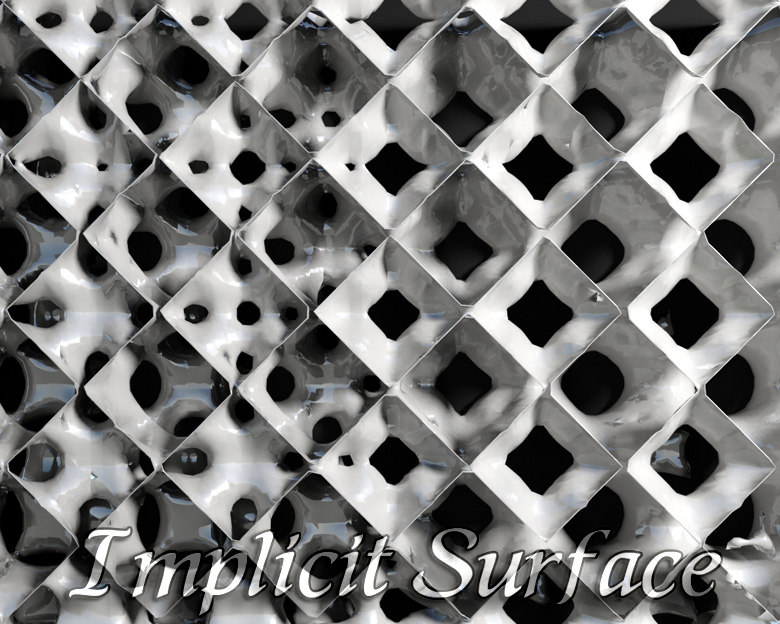| Torabi Architect. | |
| Implicit Surface Documents | Apr 2009 |
 |
Implicit models constitute a powerful mathematical description of the geometry of three dimensional objects. Under this framework, a surface is defined as the set of points which satisfy the equation :
The implicit description is particularly effective to model smooth intricate shapes. For this reason, it has been extensively used in various areas of application. For example: in science for the visualization of molecules, in engineering for the design of industrial products, and in entertainment for the creation of animated characters. Mathsurf plug-in provides you a powerful tool to start with implicit surfaces. This script can polygonize the implicit geometries with desired accuracy. Polygonization methods incorporate two basic operations: sampling and structuring. Sampling generates a set of points on the implicit surface. Structuring links those points to construct a mesh. The first operation deals with geometry, while the second operation deals with topology. The simplest polygonization algorithms are based on uniform decompositions of the ambient space. They employ a cell complex made of cubical elements of the same size. The implicit function is evaluated at node points of the grid underlying the uniform spatial decomposition, and the samples obtained are assembled using adjacency relations from the cell complex. The algorithm here is straightforward to implement, but produce polygonal meshes that are not adapted to the implicit surface. Such a solution is only acceptable for shapes with regular features, where the surface curvature is almost constant. In general, uniform decomposition results in polygonizations that give poor approximations of the implicit surface. The fixed sampling rate causes oversampling of areas with low curvature and under-sampling of areas with high curvature. For a given level of accuracy, the algorithm has to sample everywhere with a rate that is high enough to capture the smallest shape feature. This often creates a representation which has too many polygons, and that may be impractical because of memory limitations. The best solution is to construct an adapted polygonization. This method employs a sampling rate that varies spatially according to local surface complexity. Consequently, it produces the minimum number of polygons required to approximate the surface with the desired precision. |
| www.torabiarchitect.com |